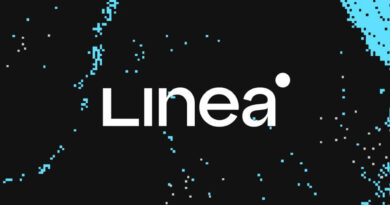How Token Vesting and Unlock Schedules Affect Crypto Prices in 2025
Discover how token vesting and unlock schedules impact crypto prices in 2025. Learn about supply dynamics, investor sentiment, and strategies to navigate volatility in projects like Aptos and Arbitrum.
Introduction
Token vesting and unlock schedules are critical mechanisms in cryptocurrency projects, designed to align incentives, prevent market dumps, and ensure long-term commitment from stakeholders. These schedules dictate when tokens allocated to team members, investors, or other parties become available for trading, directly influencing supply dynamics and price volatility. In 2025, as the crypto market matures, understanding their impact is essential for investors and traders. This article explores how token vesting and unlock schedules affect crypto prices, key factors to consider, and strategies to navigate their influence.
What Are Token Vesting and Unlock Schedules?
- Token Vesting: A process where tokens are gradually released to recipients (e.g., team, advisors, early investors) over a predetermined period, preventing immediate sales that could crash prices.
- Unlock Schedules: The timeline specifying when and how vested tokens become tradable, often including cliff periods (a delay before any tokens unlock) and linear or staged vesting (tokens released gradually or in batches).
For example, a project might allocate 20% of its tokens to the team with a 12-month cliff and 24-month linear vesting, meaning no tokens are released for a year, followed by monthly unlocks over two years. These mechanisms aim to build trust, stabilize prices, and align stakeholder interests with project success.
How Token Vesting and Unlock Schedules Affect Crypto Prices
Token vesting and unlock schedules influence crypto prices through supply dynamics, investor sentiment, and market behavior. Below are the primary ways they impact prices:
- Supply and Demand Dynamics
Unlock schedules directly affect a token’s circulating supply, which, alongside demand, determines price. When large volumes of tokens are unlocked, the increased supply can exert downward pressure if demand doesn’t keep pace.
- Example: In 2025, Aptos (APT) faced a 3.5% price drop after an 11.31 million token unlock ($225 million), increasing circulating supply by 2%. Similarly, Arbitrum’s $2.2 billion unlock in 2024 led to a 10% price decline due to oversupply fears.
- Counterpoint: If a project demonstrates strong fundamentals (e.g., ecosystem growth, adoption), demand may absorb unlocks, stabilizing or boosting prices. Solana’s (SOL) 2024 unlocks had minimal impact due to robust DeFi and NFT activity.
- Investor Sentiment and Market Psychology
Unlocks often trigger fear, uncertainty, and doubt (FUD) among investors, anticipating sales by insiders or early investors. This sentiment can lead to preemptive selling, amplifying price drops.
- Cliff Unlocks: Large unlocks after cliff periods (e.g., 12–24 months) can cause significant volatility, as seen with dYdX’s 30% price drop post-cliff in 2023.
- Transparency: Projects with clear, public vesting schedules (e.g., published on CoinMarketCap or Messari) build trust, mitigating negative sentiment. In 2025, tools like TokenUnlocks.app provide real-time unlock data, empowering investors to anticipate events.
- Positive Sentiment: Gradual unlocks signal long-term commitment, boosting confidence. For instance, Polygon’s (MATIC) extended vesting for team tokens in 2024 supported a 15% price rally.
- Selling Pressure from Stakeholders
The behavior of token recipients (team, VCs, advisors) post-unlock significantly impacts prices.
- Venture Capitalists (VCs): VCs often sell unlocked tokens to realize returns, especially during bull markets. Data from 2025 shows VC unlocks averaging $1.2 billion monthly across top projects, correlating with 5–8% price dips.
- Team Behavior: Teams holding or staking unlocked tokens signal confidence, stabilizing prices. Conversely, rapid sales erode trust, as seen with Terra’s (LUNA) 2022 collapse, partly tied to mismanaged unlocks.
- Lockup Extensions: Projects like Avalanche (AVAX) extended vesting in 2024, delaying unlocks and boosting prices by 12% due to reduced supply pressure.
- Market Conditions and Timing
The broader market environment amplifies or mitigates unlock impacts.
- Bull Markets: High demand in 2025’s bull cycle (Bitcoin at ~$80,000) often absorbs unlocks, minimizing price drops. For example, Optimism’s (OP) 2024 unlocks had negligible impact amid DeFi growth.
- Bear Markets: Unlocks during downturns exacerbate declines due to low liquidity. Historical data from 2022 shows projects with heavy unlocks (e.g., Flow) dropping 20–30%.
- Event Timing: Unlocks coinciding with negative news (e.g., hacks, regulatory crackdowns) amplify bearish effects, while positive catalysts (e.g., mainnet launches) can offset them.
- Tokenomics Design
Well-structured tokenomics can dampen unlock-related volatility.
- Gradual Vesting: Linear vesting over 3–5 years (e.g., Cardano’s ADA) reduces supply shocks compared to large quarterly unlocks (e.g., EOS’s 2018–2019 dumps).
- Low Initial Circulating Supply: Projects with low initial supply (e.g., 10–20% at TGE) face greater volatility during unlocks, as seen with Worldcoin’s (WLD) 25% drop post-unlock in 2024.
- Burn Mechanisms: Token burns or buybacks, like Binance Coin’s (BNB) quarterly burns, offset unlock pressure, supporting price stability.
- Staking Incentives: High staking rewards (e.g., 10–20% APY) encourage holders to lock tokens, reducing sell pressure. Cosmos (ATOM) maintained price stability in 2025 despite unlocks due to 15% staking yields.
Key Factors Influencing Unlock Impact
Several factors determine how unlocks affect prices:
- Unlock Volume: Large unlocks (e.g., >5% of circulating supply) increase sell pressure. Data from 2025 shows unlocks over 3% typically cause 2–10% price dips.
- Recipient Type: VCs and insiders are more likely to sell than community-focused allocations (e.g., airdrops).
- Project Maturity: Established projects (e.g., Ethereum, Chainlink) weather unlocks better than newer ones due to loyal holders and ecosystem strength.
- Transparency: Clear communication about unlock schedules builds trust, reducing panic selling.
- Market Liquidity: High liquidity on exchanges (e.g., Binance, Coinbase) absorbs sell pressure, minimizing volatility.
Strategies for Investors
To navigate token vesting and unlock schedules:
- Track Unlock Calendars: Use platforms like TokenUnlocks.app, CoinMarketCap, or Messari to monitor upcoming unlocks. For example, 2025’s $14 billion in scheduled unlocks (e.g., Aptos, Arbitrum) offers trading opportunities.
- Analyze Tokenomics: Review whitepapers and dashboards for vesting details, focusing on cliff periods, vesting duration, and initial supply.
- Monitor Sentiment: Check X posts and community forums for FUD or hype around unlocks. Verified X accounts often signal major events early.
- Time Entries/Exits: Buy before positive catalysts (e.g., mainnet upgrades) or after unlock dips when oversold. Sell into strength before large unlocks.
- Diversify Risk: Avoid heavy exposure to projects with aggressive unlock schedules or low liquidity.
- Stake or Hold: Participate in staking to offset sell pressure or hold through unlocks for long-term projects with strong fundamentals.
Challenges and Considerations
- Lack of Transparency: Some projects obscure vesting schedules, eroding trust and causing unexpected dumps.
- Speculative Trading: Whales manipulate prices around unlocks, creating volatility for retail investors.
- Regulatory Risks: In 2025, regulators (e.g., SEC) scrutinize token allocations, potentially delaying unlocks or impacting prices.
- Overreliance on VCs: Heavy VC allocations (e.g., 40–50% of supply) increase sell pressure, as seen with LayerZero’s (ZRO) 2024 unlock challenges.
Future Trends in 2025
Token vesting and unlock schedules are evolving:
- Extended Vesting: Projects adopt 5–7-year vesting to align with long-term roadmaps, reducing short-term pressure.
- Dynamic Unlocks: Protocols like Aave experiment with performance-based unlocks, tying releases to milestones (e.g., TVL growth).
- Community Governance: DAOs increasingly control vesting schedules, enhancing transparency and holder influence.
- Regulatory Standards: Emerging G20 guidelines may mandate standardized vesting disclosures, reducing hidden unlocks.
- Tooling Improvements: AI-driven platforms predict unlock impacts with 85% accuracy, aiding investor decisions.
Conclusion
Token vesting and unlock schedules are pivotal in shaping crypto prices, influencing supply, sentiment, and market dynamics. In 2025, large unlocks can trigger volatility, but well-designed tokenomics, transparency, and strong fundamentals mitigate risks. By tracking schedules, analyzing tokenomics, and timing trades, investors can capitalize on opportunities while avoiding pitfalls. As the crypto market matures, evolving vesting practices and regulatory clarity will further stabilize prices, fostering sustainable growth.




